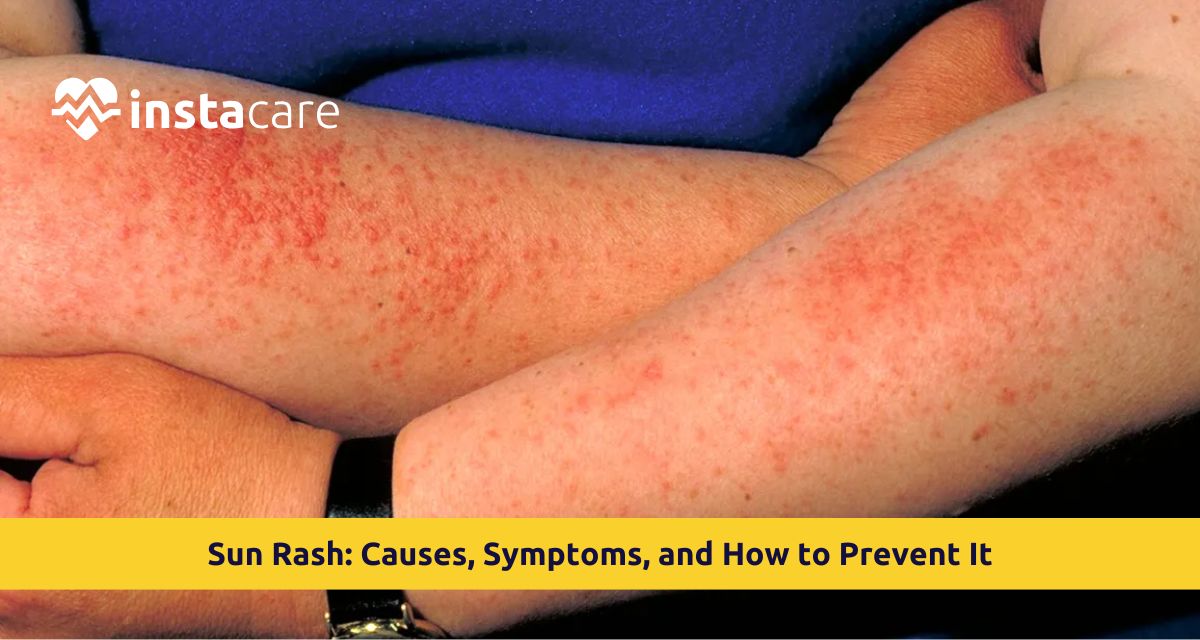What Causes Sun Rash?
Common Symptoms of Sun Rash
- The classical appearance is small, elevated papules in grouped lesions on the sun-exposed areas of the body. They are pink or red and constitute a dense burning rash. Sun rash is distinguished from heat rash over obstructed sweat glands in that it erupts over sun-exposed skin—décolletage, arms, hands, and legs are most frequently affected.
- Sun rash on the face is an itchy, pink rash on the cheeks, nose, and forehead. Sun rash on arms is usually bumps in clusters of small bumps from the wrist to the shoulder, making the arms look bumpy.
- Symptoms most typically occur 30 minutes to a few hours after sun exposure, but individuals tend not to even notice that anything is wrong until the following day. Stinging, burning, or very itchy characteristics accompany the rash.
- Sun rash after swimming is especially common because water reflects the sun and therefore subjects individuals to more exposure.
Types of Sun Rash
How to Treat Sun Rash?
- The majority of instances of sun rash illness will subside automatically in days or weeks, though sun rash treatment can provide relief.
- Soak immediately in cool or shaded locations and cool sunburned skin with cold compresses or cool baths. Hot water will merely exacerbate the irritation.
- Apply hydrocortisone cream (0.5-1%) for itching and inflammation relief. On the involved areas twice a day. Oral antihistamines such as cetirizine or loratadine settle itching and permit you to sleep normally at night.
Home remedies for sun rash relieve:
- Aloe vera gel calms irritated skin with anti-inflammatory effect
- Calming oatmeal baths suppress itching—mix colloidal oatmeal and add to warm bath water, soaking 15-20 minutes
- Cucumber slices applied over the irritation bring cooling relief, and chamomile tea compresses calm inflammation
For more severe or persistent sun rash, physicians may prescribe stronger topical corticosteroids or authorize phototherapy—closely monitored UV exposure that habituates the skin over time.
Preventing Sun Rash
- Use broad-spectrum sunscreen with SPF 30 or higher widely and often. Opt for mineral-based sunscreens with zinc oxide or titanium dioxide as these are least likely to cause photoallergic reactions. Reapply in two hours as well as after swimming and sweating.
- Wear protective clothing like wide-brimmed hats, long shirt, and tightly woven trousers. Avoid sunlight between 10 AM and 4 PM.
- Gradually acclimatise to sun by limiting first exposure to 10-15 minutes and gradually increase duration over a period of weeks. But "hardening" immunises the majority of victims.
- Monitor drugs with your doctor, reviewing options in case photosensitivity is listed as a side effect. Steer clear of perfumes, odors, or fragrant makeup prior to sun exposure.
When to Seek Medical Help
- If it comes out very quickly, is very painful, or becomes infected with pus, redness, or fever
- See a doctor right away if there is trouble breathing, dizziness, or swelling, which is a sign of a possible life-threatening allergy reaction
- See a dermatologist if sun rash lasts more than two weeks, happens very frequently, or has an impact on your lifestyle
Conclusion

